Ten years ago, the image of Syrian toddler Aylan Kurdi’s lifeless body on a Turkish beach shocked the world and rekindled the debate over Europe’s treatment of migrants as thousands fled the Syrian war. A decade later, InfoMigrants returns to the places marked by this unprecedented arrival of migrants. In Lampedusa -- the tiny Italian island that serves as a main entry point into Europe for migrants arriving from North Africa -- aid groups say migrant reception is now more efficient but less humane.
By Leslie Carretero, special correspondent in Lampedusa
The white trucks stamped with the Red Cross logo drove at full speed toward the port of Lampedusa. The vehicles weave through the narrow streets of the Italian island, a popular summer holiday destination for many Italians. The restaurants were packed on this July evening with elegant Italians.
Music from bars floated through the neighborhood. Yet at a small distance away from the festivities, a different scene was playing out.
Down by the port and far from the crowds, about a hundred migrants had just arrived on European soil for the first time after a perilous crossing of the Mediterranean. They had set sail from Libya before being rescued at sea by the Italian coast guard and brought to the port of Lampedusa. Their faces were haggard, and their bodies were bruised. Some struggled to walk. The celebratory music continued in the background, jarringly incongruous with their distress.
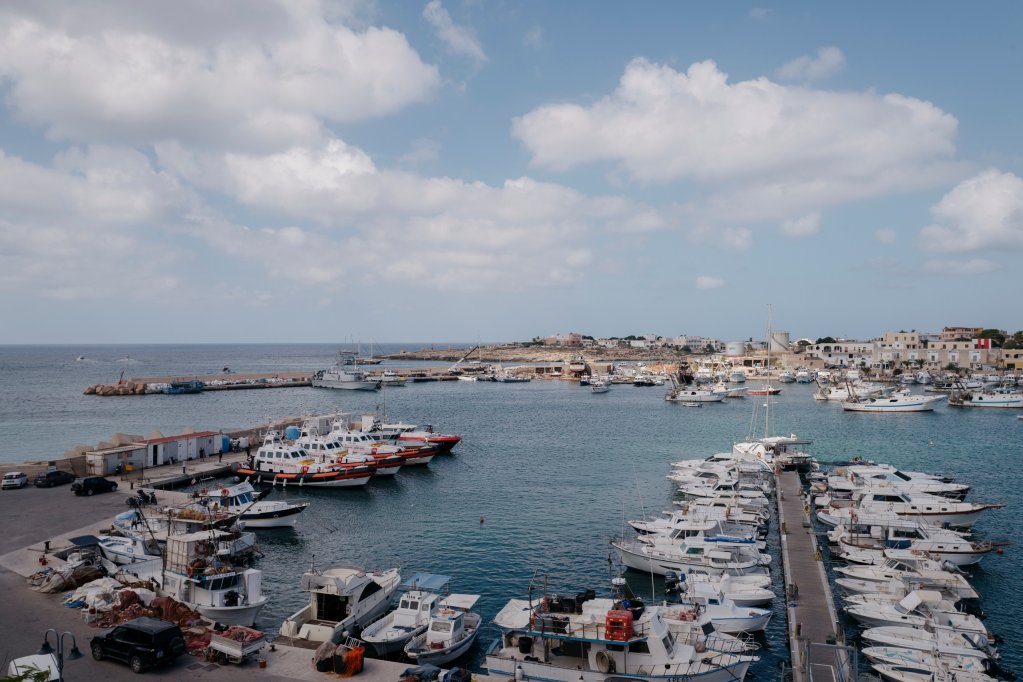
It was the fourth and last vessel to arrive on the island that day, after four calm days, despite an agitated sea and a violent wind. “We didn’t think there would be any arrivals today because the weather wasn’t good,” said a member of the Red Cross who preferred to remain anonymous.
She didn’t provide any more details. The press was not allowed to enter the disembarkation port, and the migrants were quickly transferred to the island's closed reception center. Many women were present in the two Red Cross vans, including a pregnant one, as well as several young children.
A welcoming place
Situated approximately 150 kilometers off the coast of Tunisia, Lampedusa has always been a welcoming place. "It’s in our DNA to help people. It's intrinsic. If someone arrives by sea, you have a duty to lend a hand," said Marianna Rinaudo, president of the island’s Red Cross committee. Everyone from the tiny island of only 6,000 inhabitants agreed: the law of the sea prevails over Italian law. They also had all been confronted with the issue of migration at one point or another.
The first significant influx of migrants began in 2011 during the Arab Spring. In March 2011, over 1,600 Tunisians arrived in Lampedusa in just 24 hours. The authorities recorded 10,000 arrivals between January and March. A new migration route had been established, and the arrivals haven't stopped since then.
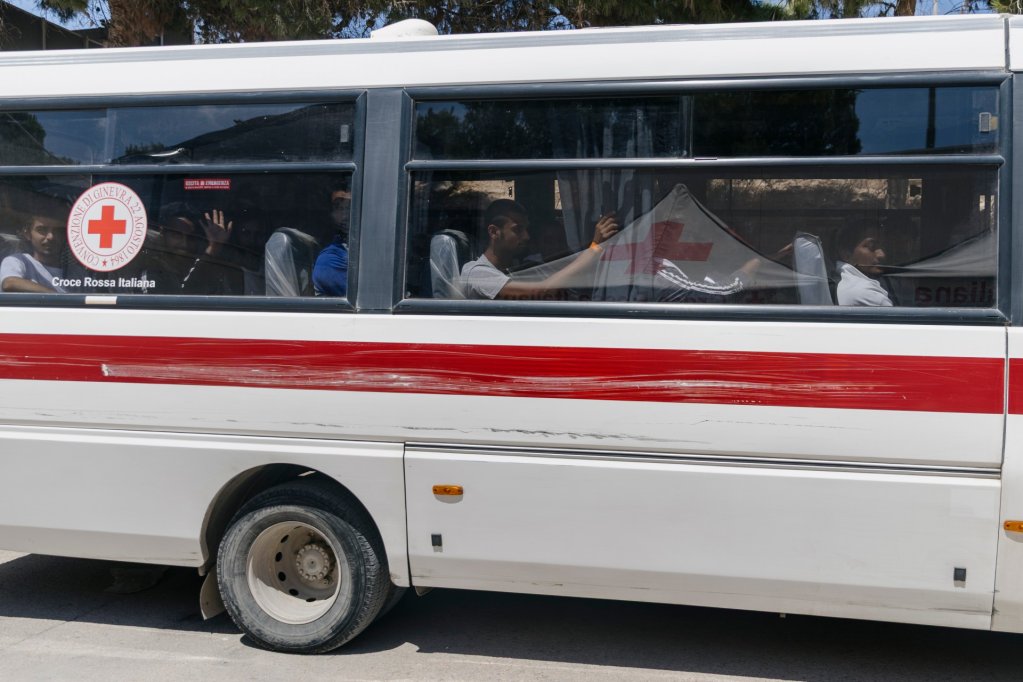
The arrival of migrants skyrocketed in 2014. There were nearly 43,000 arrivals in Italy in 2013, and the figure grew to over 170,000 the following year. The figure dipped to around 150,000 in 2015, before rising again to over 181,000 in 2016.
“When I was elected mayor in 2012, the issue of migration was being managed on an emergency basis,” said Giusi Nicolini, the mayor of Lampedusa from 2012 until 2017. Seated outside of the city’s main café, with a glass of water in one hand and a cigarette in the other, she mused over the difficulties she confronted.
“I had toilets and lighting installed at the port. It might not seem important, but firefighters used to have to bring a generator whenever migrants arrived. The migrants often spent several hours on the dock waiting to be taken to the reception center, and their basic needs weren't being met," said the former mayor. "I often felt helpless. We are isolated here and far from the decisions made in Rome.”
'The open camp has become a closed one'
The European Union’s first hotspot opened in Lampedusa, replacing the existing facility. Called a "registration center" for migrants by the officials and a "sorting center" by non-governmental organizations, the site is made up of several entities, like Frontex (the European border and coast guard agency), the International Organization for Migration (IOM) and the United Nations High Commissioner for Refugees (UNHCR).
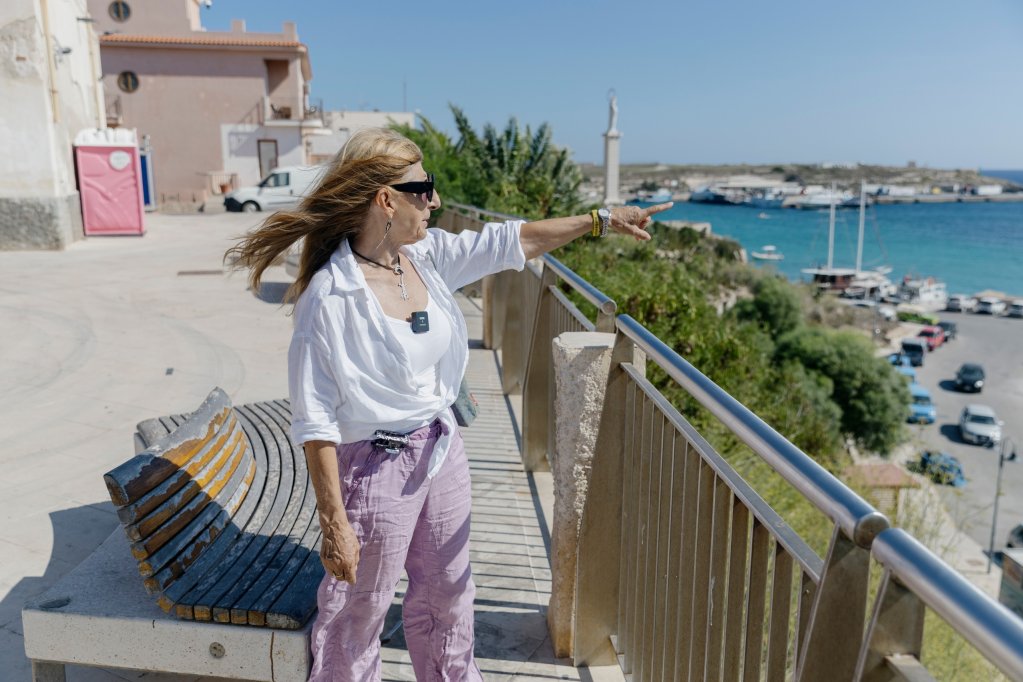
One year after the election of the current populist mayor Filippo Mannino in June 2023, the migrant reception center with room for 600 people still existed, and the Red Cross took over its management. "Two associations previously managed the facility, but it wasn’t working well. It’s more structured with the Red Cross," said Mannino.
"The system is functioning much more smoothly now. We have the material means to handle this type of situation and adapt to large influxes of migrants. The Red Cross is used to working in emergency situations," said Rinaudo. "Local residents aren’t witnesses as often to what is happening and they are less affected by the migrant arrivals.”
The migrants are now practically invisible. They are rapidly transferred from the port to the reception center, where they stay for only a few days before being dispatched to other Italian regions.
“It’s better that the migrants don’t spend hours at the port, but it also used to be a moment for discussion. Now everything happens too fast and there is no time to embrace or exchange a friendly gesture,” said Paola La Rosa, a former member of Forum Lampedusa Solidale, or Lampedusa Solidarity Forum, a group of volunteers that carry out several activities on the island. La Rosa, originally from Sicily, moved on from volunteering five years ago. “I didn’t identify anymore with the way the authorities worked,” she said simply.
Valeria Passeri, from the Mediterranean Hope association, agreed: “It’s better in a way because people were staying at the facility for a week. Yet now it’s all happening too quickly. We’re wondering how much information they can access about their rights in just a few hours.”
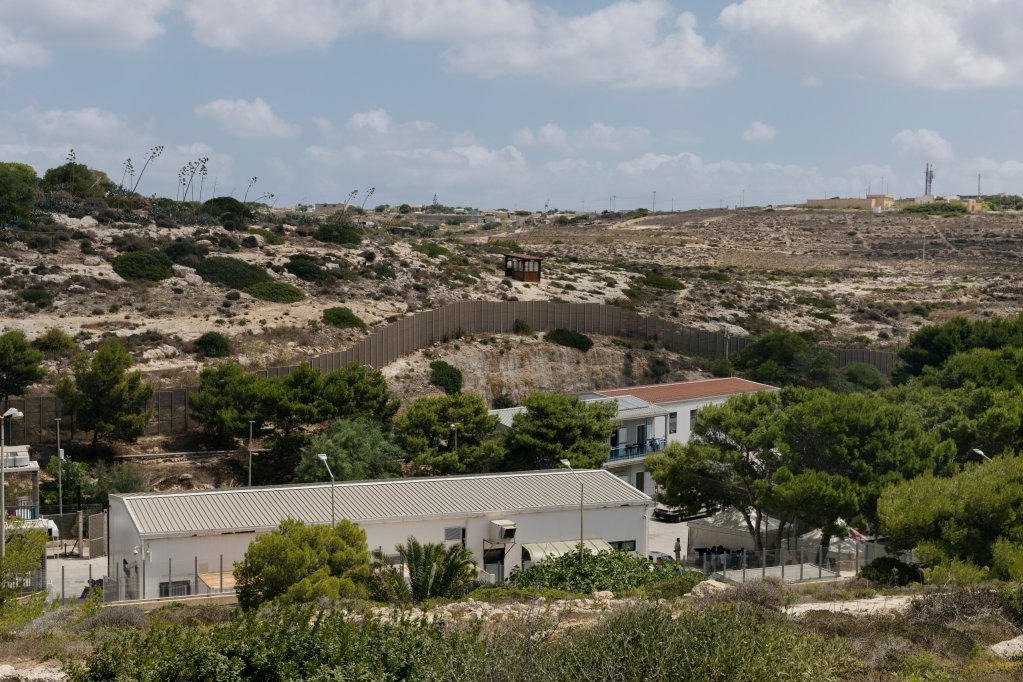
Since the COVID-19 coronavirus pandemic began in 2020, the migrants can’t leave the facility. "They used Covid as an excuse to confine people. They [migrants] used to come see us before at our headquarters but now it’s not possible anymore. They have been made totally invisible,” said Passerini. “The open camp has become a closed one," said Nicolini.
The facility is now surrounded by high fences, and military personnel in guard towers patrol the area all the time. Armed police officers stationed at the entrance prevent anyone from entering or leaving.
It wasn’t rare up until 2020 to encounter migrants in the streets of Lampedusa. The city's streets are now populated exclusively by inhabitants and tourists on vacation. It's possible for everyone to ignore what is happening only a short distance away.
"It’s certainly better organized today, but it’s missing the human aspect. They [migrants] are nothing but numbers for the Red Cross," said Pietro Bartolo, a gynecologist by profession, now nicknamed the “doctor of Lampedusa”. Nearly 70, the doctor was on the frontlines for three decades in welcoming and caring for migrants, before becoming a Eurodeputy in 2019, a position that he has since left.
‘Sea of cadavers’
Migrant arrivals were for years part of Bartolo’s daily life. Circumstances led him to become a legal expert, despite his own personal plans. “I wanted to be a gynecologist to bring life into the world, yet I was surrounded by death for 30 years instead,” he said.
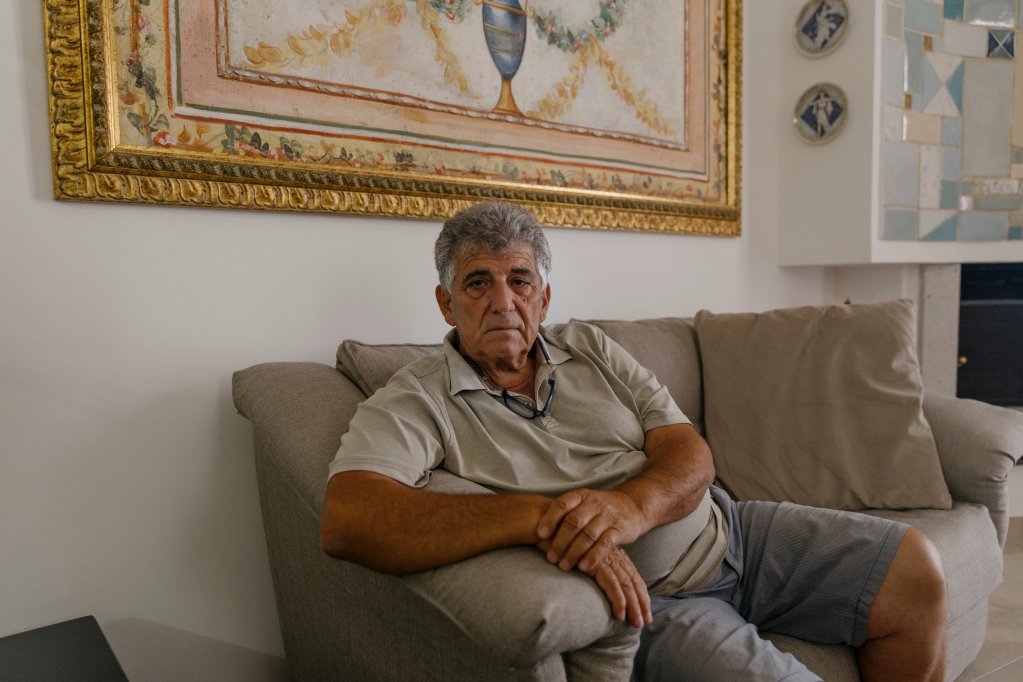
For Nicolini, the former mayor, the issue of bodies washing up on the island was also the most difficult one. “I hadn’t even taken my oath yet when 12 migrant bodies washed ashore in 2012. I didn’t know what to do, since nothing was organized,” she said. It’s now the hotspot that handles the logistics of the cadavers (conserving the bodies, identifying them, burial…). “When the living ones come, it’s not a problem because we can welcome them. It’s the dead ones that are harder to manage,” said the former mayor.
A date that profoundly impacted Lampedusa is October 3, 2013. At least 368 people died that night after their overloaded boat sank off the coast of the island. It was the first shipwreck recorded in the region, and the first of a long series of similar maritime catastrophes.
Bartolo, like many residents, remembers the event as if it were yesterday. The emotion is still strong 12 years later. "I was in charge of identifying the bodies. When I got to the port, I saw 111 body bags. The bodies were in such a state of decomposition."
The "doctor of Lampedusa" paused, taking a deep breath and wiping away his tears before continuing: "It never stopped; the bodies kept arriving constantly. These aren't just numbers; they are human beings."
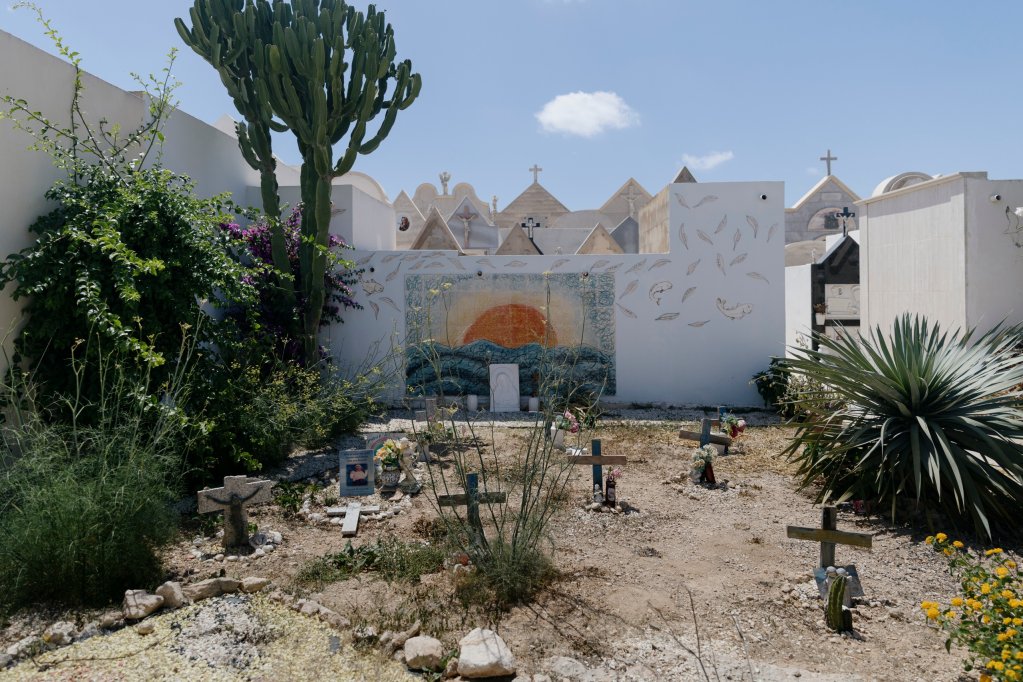
“When the rescuers arrived, they found a sea of corpses,” Amnesty International wrote on the 10th anniversary of the tragedy. “The pictures of the coffins -- many white and tiny -- lined up in Lampedusa airport shocked the world and shook Europe’s conscience. In one of the coffins, there was a woman and her newly delivered baby, the umbilical cord still attached.”
Following the shipwreck, the European Union launched the rescue operation “Mare Nostrum” in the Mediterranean, but it only lasted a year. It was replaced by a less ambitious European program, Triton, which was also discontinued in 2018. It was succeeded by Themis, and currently by Irini. Most sea rescues are currently carried out by humanitarian vessels, whose operations have been significantly hampered since Giorgia Meloni, leader of the far-right party Fratelli d'Italia, became Italy’s prime minister at the end of 2022.
In 2023, the year that followed her election, more than 2,500 migrants died in the central Mediterranean – the highest number since 2017. "The situation is worse today. Just look at the number of deaths; that speaks volumes," said Nicolini. Certain images from her five years as mayor still haunt her: "You never get used to seeing a dead baby."
